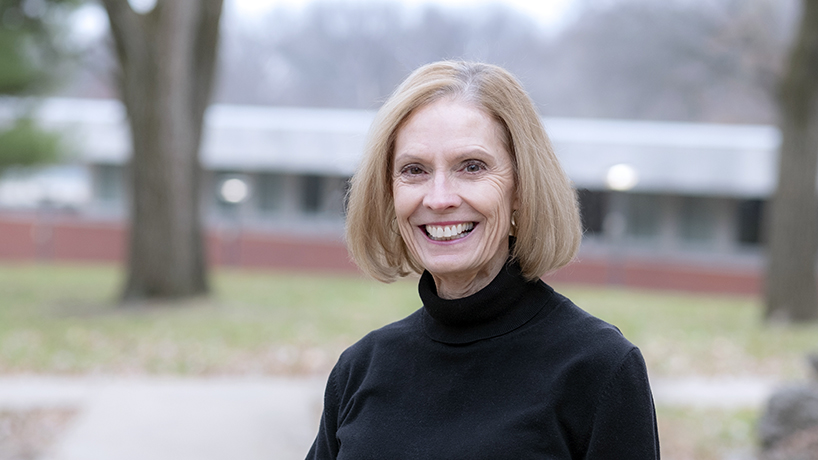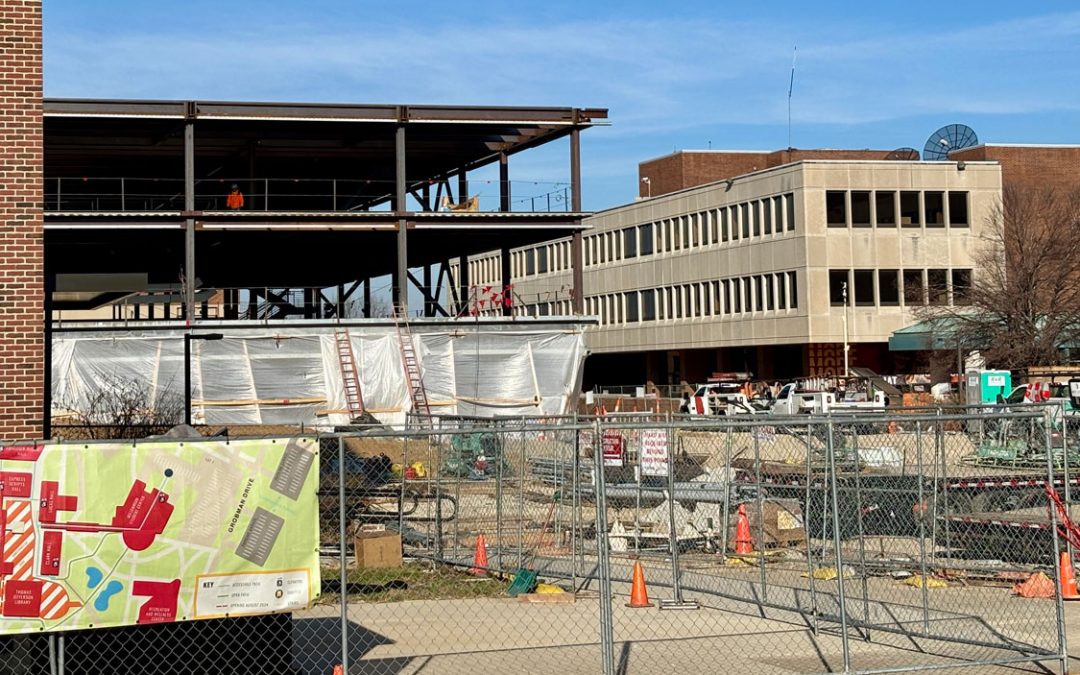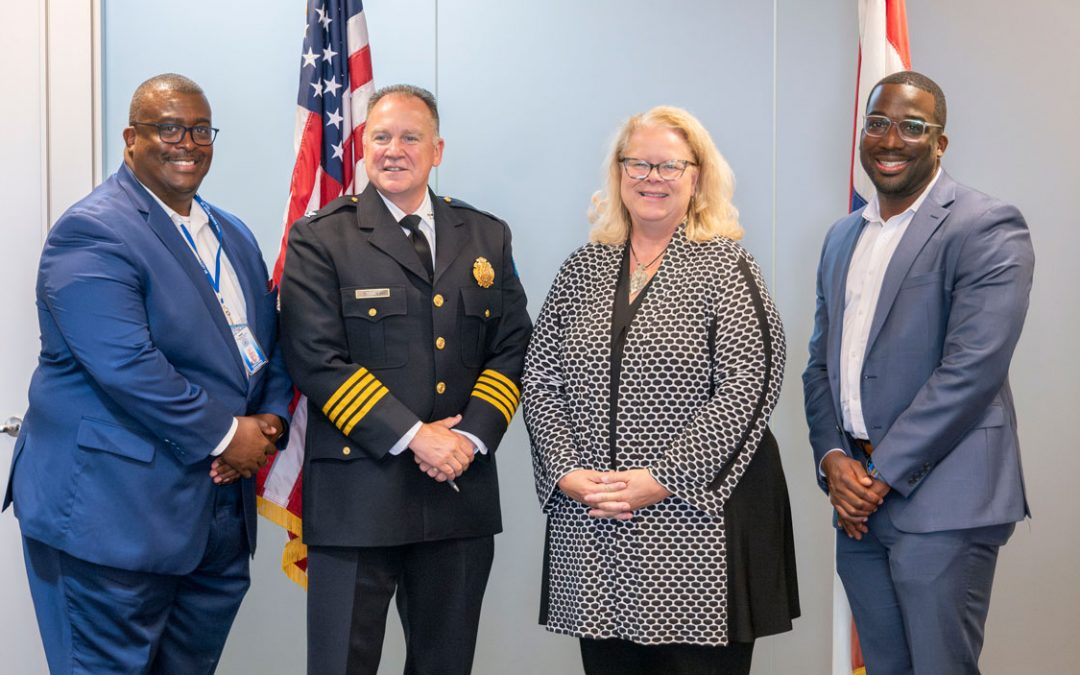
For her dissertation, nursing PhD student Lila Moersch focused on decreased mobility that results from muscle deconditioning during hospital stays. Even after only a week, older adults can lose enough muscle mass that they aren’t able to take care of themselves. (Photo by August Jennewein)
Lila Moersch’s interest – and empathy – were piqued.
Throughout her career as a nurse, Moersch had watched older patients come into the hospital for relatively short stays and lose their mobility to the point where they couldn’t walk, couldn’t shower, couldn’t take care of themselves – they could barely hold themselves up. Even a week’s hospitalization could do it.
“They lost their independence,” Moersch said. “It’s very dramatic and distressing to these individuals.”
She wanted to do something to help her patients and others, and she knew the first step would be understanding the extent of the problem.
When it came time to pick a research interest for her PhD dissertation in the College of Nursing at the University of Missouri–St. Louis, she decided to focus on the decreased mobility that results from muscle deconditioning during hospital stays. Poised to graduate later this week, Moersch has not only examined what happens to patients’ mobility but has recommendations for providers on how to lessen the effects of hospital stays.
Loss of mobility is a known problem in hospitals, but Moersch’s scope extends beyond previous research. For her qualitative study, she interviewed patients after a short-term hospital stay about their experiences of losing mobility and their efforts to regain it.
“If I could sum it all up in one question, I asked the study participants, ‘What was it like to get up and around after you came home from the hospital?’” Moersch said. “These were people that were really active before. I interviewed 10 people, and only one person told me they got back to their pre-hospital mobility level. Wow, even after a year, nobody else got back to their prior mobility level.”
The first part to understanding why this is, Moersch says, is to understand how people lose muscle mass. She notes that older adults lose approximately 10 percent every decade, and by the time an adult is 90, they may have lost 30 percent of their muscle mass and strength.
“The fact is that they’re not as strong as they used to be because they don’t have as much muscle mass and muscle strength,” she said. “That, combined with the fact that when older people are in the hospital, they spend 83 percent of their time in a bed and about 12 percent of their time in a chair, so they’re not physically active at all.”
Patients who are on a ventilator or are paralyzed can lose up to 6 percent of their muscle mass a day in the hospital. Those who are more mobile may lose 2 to 4 percent daily – still a significant number.
The other side to this is patient knowledge. The only way to regain mobility is to work hard, and that is uncomfortable. It might also be counterintuitive for patients who believe resting will lead to recovery.
“If they want to continue to get better, they have to push,” she said. “It has to be the patient’s ultimate goal, if they want to get back to their pre-hospitalization level or better, which often does not happen. But if they want that, they have to work towards that. I think they should know that their prior mobility level will not return with rest.”
She noticed that individuals who had lost mobility often developed strategies to help maintain their independence. They might have set up walkers at various points in the hall as rest sites, figured out it was easier to walk backwards down the steps or realized that their arms were stronger than their legs.
“Probably the biggest help was having family available to help them with that personal care that they couldn’t do, to help them with meal preparation,” Moersch said. “Then also that emotional support that they need so deeply.”
Moersch found that subjects who were optimistic and looked toward the future made larger strides. It also helped to set small, attainable goals, such as walking to the kitchen.
The singular woman who recovered fully had been helping rehab a house, and Moersch theorized that this large project gave her more motivation than her peer group. Since that type of circumstance is difficult to replicate, Moersch focused on recommendations for health care providers.
The largest one is simply to teach patients what needs to be done before they leave the hospital.
“After they’re home and they’re recovering, they may have physical therapy only for a certain amount of time,” she said. “Once your physical therapy ends, the patient needs to know their therapy isn’t done. It’s up to them. If they want to continue to get better, they have to continue to push.”
Though Moersch has wrapped up her dissertation, she isn’t done. She hopes to publish the results of her research and then continue examining immobility by looking for characteristics of individuals who successfully build back strength, developing early mobility programs and more.
She also hopes to bring the results of her research and the expertise gained from her PhD to the BSN students she teaches at the Chamberlain University College of Nursing. A self-proclaimed strict teacher, Moersch loves to see her students acquire skills and move from being novices to feeling confident in taking care of patients.
That’s a throwback to her own career, where she progressed from a registered nurse with an associate degree working in the emergency room to cardiovascular open-heart surgery to nurse education. Along the way, she earned a BSN, a master’s degree and now a PhD.
“I was really interested always in learning more, always, always, always,” Moersch said. “Research, learning more about nursing and just the whole process of the PhD program has been so rewarding. I had no idea what I was getting into. I don’t think you ever do until you actually get into it. But it’s been wonderful. I have loved my whole journey.”
Media coverage
St. Louis Public Radio














